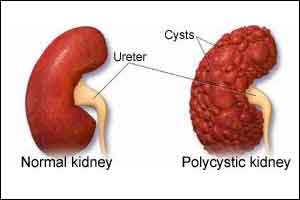- Home
- Editorial
- News
- Practice Guidelines
- Anesthesiology Guidelines
- Cancer Guidelines
- Cardiac Sciences Guidelines
- Critical Care Guidelines
- Dentistry Guidelines
- Dermatology Guidelines
- Diabetes and Endo Guidelines
- Diagnostics Guidelines
- ENT Guidelines
- Featured Practice Guidelines
- Gastroenterology Guidelines
- Geriatrics Guidelines
- Medicine Guidelines
- Nephrology Guidelines
- Neurosciences Guidelines
- Obs and Gynae Guidelines
- Ophthalmology Guidelines
- Orthopaedics Guidelines
- Paediatrics Guidelines
- Psychiatry Guidelines
- Pulmonology Guidelines
- Radiology Guidelines
- Surgery Guidelines
- Urology Guidelines
2017 revised KDIGO Chronic Kidney Disease-Mineral and Bone Disorder (CKD-MBD) Guidelines

The KDIGO 2017 Clinical Practice Guideline Update for the Diagnosis, Evaluation, Prevention, and Treatment of CKD-MBD represents a selective update of the prior CKD-MBD Guideline published in 2009. This update, along with the 2009 publication, is intended to assist the practitioner caring for adults and children with chronic kidney disease (CKD), those on chronic dialysis therapy, or individuals with a kidney transplant.The updated guideline has been published in the journal Kidney International.
The 2017 revised KDIGO CKD-MBD recommendations :
- In patients with CKD G3a to G5D with evidence of CKD–MBD and/or risk factors for osteoporosis, we suggest BMD testing to assess fracture risk if results will impact treatment decisions. (Grade 2B recommendation)
- 3.2.2: In patients with CKD G3a to G5D, it is reasonable to perform a bone biopsy if knowledge of the type of renal osteodystrophy will impact treatment decisions. (Not graded)
- 4.1.1: In patients with CKD G3a to G5D, treatments of CKD–MBD should be based on serial assessments of phosphate, calcium, and PTH levels, considered together. (Not graded)
- 4.1.2: In patients with CKD G3a to G5D, we suggest lowering elevated phosphate levels toward the normal range. (Grade 2C recommendation)
- 4.1.3: In adult patients with CKD G3a to G5D, we suggest avoiding hypercalcemia. (Grade 2C recommendation)
- 4.1.4: In patients with CKD G5D, we suggest using a dialysate calcium concentration between 1.25 and 1.50 mmol/L (2.5 and 3.0 mEq/L). (Grade 2C recommendation)
- 4.1.5: In patients with CKD G3a to G5D, decisions about phosphate-lowering treatment should be based on progressively or persistently elevated serum phosphate. (Not graded)
- 4.1.6: In adult patients with CKD G3a to G5D receiving phosphate-lowering treatment, we suggest restricting the dose of calcium-based phosphate binders. (Grade 2B recommendation)
- 4.1.8: In patients with CKD G3a to G5D, we suggest limiting dietary phosphate intake in the treatment of hyperphosphatemia alone or in combination with other treatments. (Grade 2D recommendation) It is reasonable to consider phosphate source (e.g., animal, vegetable, additives) in making dietary recommendations. (Not graded)
- 4.2.1: In patients with CKD G3a to G5 not on dialysis, the optimal PTH level is not known. However, we suggest that patients with levels of intact PTH progressively rising or persistently above the upper normal limit for the assay be evaluated for modifiable factors, including hyperphosphatemia, hypocalcemia, high phosphate intake, and vitamin D deficiency. (Grade 2C recommendation)
- 4.2.2: In adult patients with CKD G3a to G5 not on dialysis, we suggest that calcitriol and vitamin D analogues not be routinely used. (Grade 2C recommendation) It is reasonable to reserve the use of calcitriol and vitamin D analogues for patients with CKD G4 to G5 with severe and progressive hyperparathyroidism. (Not graded)
- 4.2.4: In patients with CKD G5D requiring PTH-lowering therapy, we suggest calcimimetics, calcitriol, or vitamin D analogues, or a combination of calcimimetics with calcitriol or vitamin D analogues. (Grade 2B recommendation)
- 4.3.3: In patients with CKD G3a to G5D with biochemical abnormalities of CKD–MBD and low BMD and/or fragility fractures, we suggest that treatment choices take into account the magnitude and reversibility of the biochemical abnormalities and the progression of CKD, with consideration of a bone biopsy. (Grade 2D recommendation)
Bone Disorderchronic dialysis therapychronic kidney diseasehigh phosphate intakehyperphosphatemiahypocalcemiaosteoporosisphosphaterenal osteodystrophyVitamin D
Next Story
NO DATA FOUND

Disclaimer: This site is primarily intended for healthcare professionals. Any content/information on this website does not replace the advice of medical and/or health professionals and should not be construed as medical/diagnostic advice/endorsement or prescription. Use of this site is subject to our terms of use, privacy policy, advertisement policy. © 2020 Minerva Medical Treatment Pvt Ltd